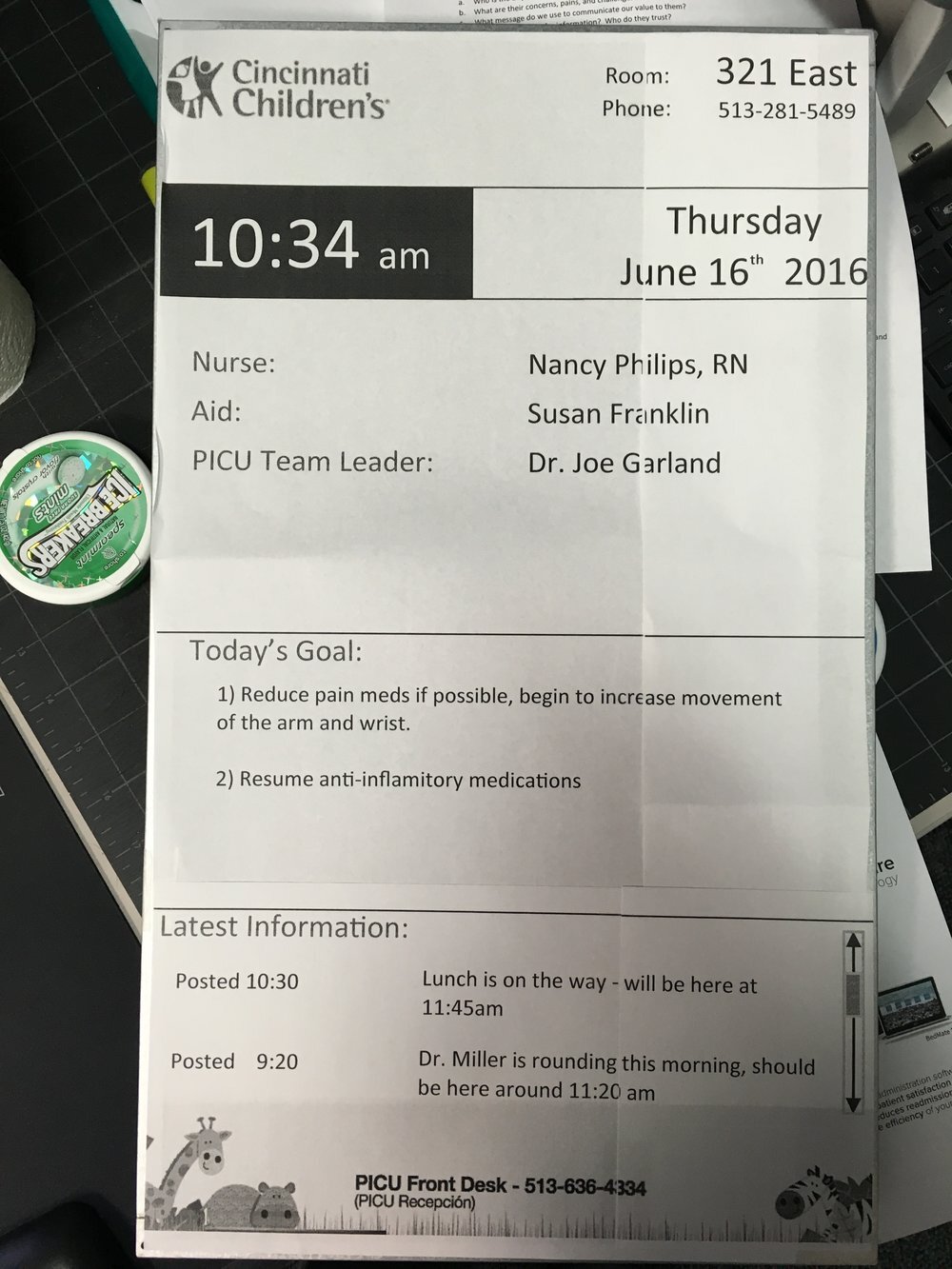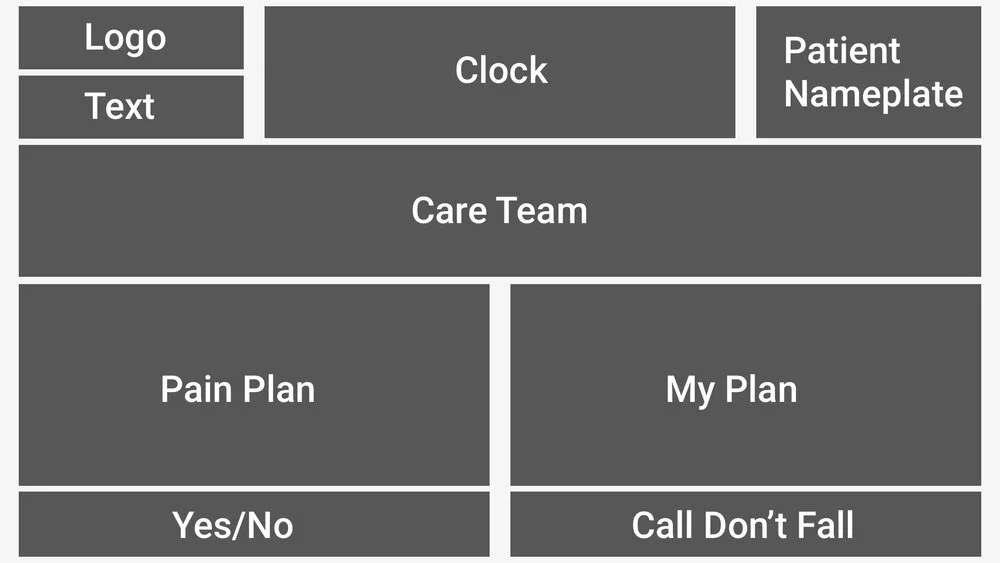Patient Whiteboard
Introduction
As a part of expanding the HCI product line, the product development team we found the whiteboard is the most commonly used communication tool by hospitals to provide information to the patients and staff. The largest pain point is that each whiteboard needs to be written on and updated manually. The core idea of this digital whiteboard was to present a display similar to the bedside TV’s and tablets and combine it with the convenience of writing on the whiteboard. Initially meant to be a vertical portrait, once we were in R&D with manufacturing, we found that it would be easiest to do a landscape mode with the whiteboard beneath it initially.
Requirements and Data Gathering
Gaining an understanding of the current use of a whiteboard in the patient rooms from both nurses and doctors was paramount. Initially the hypothesis from product development was to display general information such as time, date, nurse, room number, etc.. After researching with nurses, the primary user of whiteboards in a patient room, we found out we also needed to include things such as the goal, care team information and other customizable features that would be needed for each hospital depending on their own processes.
Wire-framing and Proof of Concept
While I was designing this, we were also dealing with an influx in custom requests for our current line of bedside TV’s and tablets that were taking considerable development effort. In order to allow us to move more agile, I gained an understanding from the development team to find out if it would be possible to create modules within our current infrastructure. This modular design would allow our team to create separate modules for each customer requirement rather than customizing the entire operating system as we had done up to this point.
Implementation
The final product allowed for us to do exactly what we designed the system to do, providing us the flexibility needed for the custom requests while simultaneously allowing for hospitals to maintain the integrity of the design to provide value to their patients. Additionally we created the modular grid to flip vertically too, similar to how a website’s columns might adjust the content based on the viewport size in the event we were able to create a vertical version of this whiteboard.








